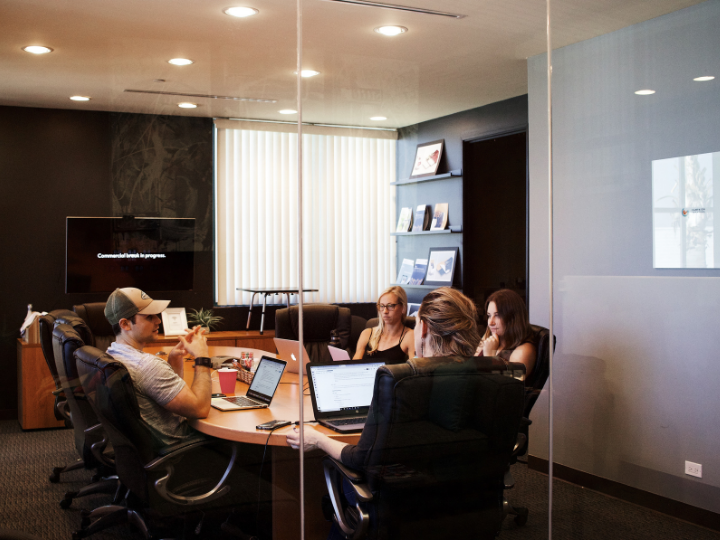by Diya Luke*
If resilience is defined as the capacity to spring back after adversity, I admit that all the springing has me feeling fatigued — and I know I’m not alone.
Using the rise in mental health challenges as a marker, we know that people — undoubtedly the foundation of any organizational system — are under exhausting stress, and the need to tackle this issue at an organizational level has never been clearer.
According to WTW’s 2021 Wellbeing Diagnostic Survey, 86% of employers see mental health, stress and burnout as a top priority — but just 25% have articulated and adopted a wellbeing strategy.
So what can your organization, whether it’s a school, business or household, do to build resilience when your people are under pressure?
I suggest a humanized approach: recognize your vulnerabilities, find your courage to change and don’t try to do it alone.
1. Recognize your vulnerabilities
Many of us made personal changes as a result of what we have learned about ourselves these past two years — changes in schools, jobs, relationships, personal habits. All of these behavioural adjustments are driven by identifying vulnerabilities.
What works for us as individuals can also work for our organizations. Just as addressing personal vulnerabilities must be done in the context of the overall individual, understanding an organization’s vulnerabilities should be done at the enterprise level.
Building a resilient organization is more effective when done holistically and with the input of multiple stakeholders and functions, to identify and prioritize your vulnerabilities and put you on the resilience path.
One way an organization can build an overarching view of vulnerabilities and associated mitigation tactics is through risk intelligence software and data visualization tools. These tools provide an understanding of risks, including coverage and claim information, and, most importantly, they can provide actionable information for more efficient risk planning and financing.
While this assessment can be led by the finance or risk function, building a resilient organization also requires input from human resources, operations and technology.
For example, critical to your organizational resilience is the resilience of your people. Health and retirement readiness diagnostics can help you measure – and improve – the physical, financial and emotional wellbeing of your employees, by enabling you to identify gaps among employees and take steps to improve equity. Most importantly, well-done diagnostics can identify emotional wellbeing issues such as anxiety and depression, challenges that, if left unaddressed, impact personal and organizational performance.
Only with a baseline understanding of organizational vulnerabilities can you then begin to change.
2. Find your courage to change
After first recognizing and understanding vulnerabilities, leaders can then commit to taking the steps necessary to support resilience.
Organizational change requires first inspiring minds and then changing behaviours. And for lasting change, leaders must link change to organizational purpose, which needs to be clearly defined, communicated and understood.
A Harvard University study found that average EBITDA (earnings before interest, taxes, depreciation, and amortization) of purpose-driven brands was four times that of low-purpose brands. Purpose-driven organizations are more profitable and more resilient.
A good example of standing out from the pack — being courageous — and building resilience comes from the U.S. State of Florida. Florida’s vulnerabilities, including rising coastlines, are well known within the state and across the U.S.
Like every organization, the state has limited investment resources. Unlike every organization, Florida has prioritized addressing its vulnerabilities, which enabled it to align risk investments and actions with critical needs.
WTW is working with Florida to evaluate a wide range of extreme risks – from climate and weather, cyber, water, to socio-economic and human capital risk in an integrated manner so the state can prioritize mitigating actions. By investing in risk mitigation, Florida is now better able to protect its natural resources, such as its coastline, while also attracting additional business, which in turn brings in additional residents and creates more jobs and growth.
Organizations of all sizes can follow Florida’s model. By first identifying and quantifying your vulnerabilities, you can then evaluate the potential return on investment of mitigation efforts, prioritize initiatives and effectively deploy capital where it will have the greatest impact.
3. Mobilize your resources
Neither individual nor organizational resilience can be built alone. Even our virtual world is increasingly interconnected and we have come to realize the fundamental necessity of relying on others.
While our vulnerabilities may be unique to our organizations, the associated actions we take are often similar to other organizations’ and therefore are much more impactful and efficient when they are collaborative. Resilience is easier when there is critical mass. Accessing scale and purchasing power through partnerships and collaboratives can be a means to build resilience.
For example, when building the financial resilience of workforces, organizations can make the most of their limited resources by sharing retirement plan costs and administrative platforms through master trusts and pooled employer plans. Pooled investments are also another way to access scale in the area of climate sustainable investing.
Aligning incentives is critical to effective mobilization. In addition to ensuring the right partnership agreements between organizations, each organization should evaluate its own incentives structure. For example, if your organization has a goal to move closer to net zero, you’ll need to not only align executive pay to climate metrics, but you’ll also want to take measures to ensure your people are prepared for the change that is to come.
A new ethos
Collaborating with others will build your strength, equipping you to confront the crises that will inevitably come.
By taking a more humanized, shared approach to resilience, we can shift away from a defensive mindset toward a proactive and forward-thinking one — a mindset that sees the opportunity in resilience.
*Managing Director, WTW
**first published in: www.weforum.org




 By: N. Peter Kramer
By: N. Peter Kramer

